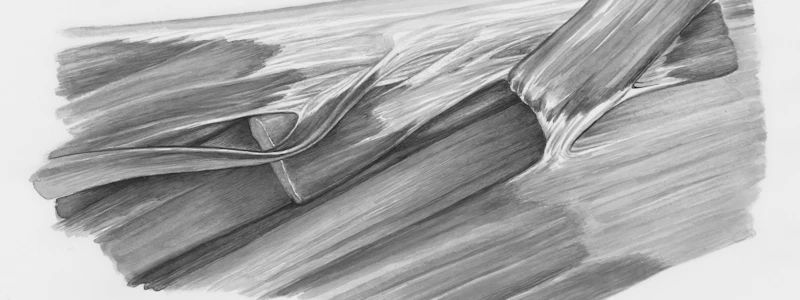Podcast
Questions and Answers
Which of the following accurately describes the relationship between isolation, speciation, and biodiversity?
Which of the following accurately describes the relationship between isolation, speciation, and biodiversity?
- Speciation is a primary cause of isolation, and both processes limit overall biodiversity.
- Increased biodiversity directly prevents isolation, which in turn reduces speciation rates.
- Biodiversity directly drives isolation, which is necessary to maintain species without speciation.
- Isolation can lead to speciation, which subsequently contributes to increased biodiversity. (correct)
How does the presence of homologous structures in different species support the theory of evolution?
How does the presence of homologous structures in different species support the theory of evolution?
- They suggest a shared ancestry, indicating divergence from a common ancestor over time. (correct)
- They indicate recent adaptation to different environments, showing no ancestral relationship.
- They confirm that species were created independently with similar designs for similar functions.
- They demonstrate convergent evolution, where species independently develop similar structures.
What is the primary distinction between natural and artificial selection?
What is the primary distinction between natural and artificial selection?
- Natural selection always results in increased biodiversity, whereas artificial selection reduces it.
- Artificial selection is a more efficient process for adaptation than natural selection.
- Natural selection occurs without human intervention, while artificial selection involves human intervention. (correct)
- Natural selection primarily affects plants, and artificial selection primarily affects animals.
An organism is described as having a closed circulatory system, a four-chambered heart, and the ability to regulate its body temperature internally. Which of the following inferences is most likely correct?
An organism is described as having a closed circulatory system, a four-chambered heart, and the ability to regulate its body temperature internally. Which of the following inferences is most likely correct?
Imagine a cladogram illustrating the evolutionary relationships among several species. Which principle is fundamentally used to determine the branching patterns in the cladogram?
Imagine a cladogram illustrating the evolutionary relationships among several species. Which principle is fundamentally used to determine the branching patterns in the cladogram?
Flashcards
Posterior
Posterior
Toward the back (think tail)
Open Circulatory System
Open Circulatory System
Blood is not always contained in vessels
Purpose of the Brain
Purpose of the Brain
Main control center for relaying sensory and motor information.
Cladogram
Cladogram
Signup and view all the flashcards
Speciation
Speciation
Signup and view all the flashcards
Study Notes
- Anatomy and Evolution Test Topics are shown
Anatomical Directions
- Dorsal vs. Ventral
- Anterior vs. Posterior
Circulatory Systems
- Open circulatory system vs. closed circulatory system
Body Temperature Regulation
- Cold blooded vs. warm blooded
Body Plan
- Bilateral symmetry
Body Systems
- The role of the nervous system
Reproduction
- The purpose of sexual reproduction in the animal kingdom
Organ Functions
- The purpose of the following organs: esophagus, intestines, brain
- 3-chambered vs. 4-chambered heart
- Internal vs. exoskeleton
- Testes, ovaries, nerve vs. spinal cord, kidney, and lungs
Classification
- Taxonomy
- Phylogeny
- Classification tools: cladogram/dichotomous keys
Adaptations
- Physical vs. behavioral adaptations
Evolution
- Natural selection and evolution
- Natural selection vs. artificial selection
- Species and speciation
- Isolation leads to speciation, which leads to biodiversity
Genetic Change
- Recombination and mutation
Evolutionary Evidence
- Homologous structures indicate common ancestry
- Vestigial traits and their role in evolution
Evolutionary Mechanisms
- Overproduction, competition, and variation
Studying That Suits You
Use AI to generate personalized quizzes and flashcards to suit your learning preferences.



